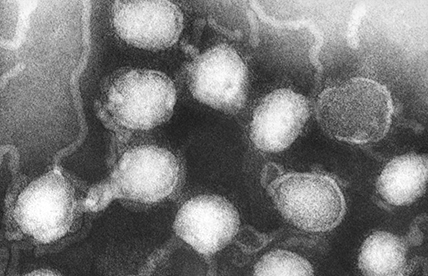La Crosse (LAC) encephalitis was discovered in 1963 in La Crosse, Wisconsin. Since then, the virus has been identified in several midwestern and mid-Atlantic states, and there has been a recent increase of cases in the southeast United States. During an average year, about 75 cases of LAC encephalitis are reported to the CDC.
Typically, LAC encephalitis initially presents as a nonspecific illness with fever, headache, nausea, vomiting, and lethargy. Severe cases occur most commonly in children under the age of 16, the elderly, and those with reduced or compromised immune systems. These severe cases can produce seizures, coma, paralysis, and a variety of neurological complications after recovery. However, the overall death rate from LAC encephalitis is less than 1% of clinical cases.*

La Crosse encephalitis virus (LACV) is maintained in a cycle between vector insects and vertebrate hosts, usually small mammals such as chipmunks and squirrels, in deciduous forest habitats.
Vector insects
Aedes triseriatus (the eastern tree hole mosquito)
Transmission to humans can occur when the vector insect feeds on an infected host and then bites a human. However, humans rarely, if ever, develop concentrations of LACV in their bloodstreams high enough to infect feeding mosquitoes.
*Source: https://www.cdc.gov/lac/tech/symptoms.html
Vector Distribution and Habitats
True to its nickname, Aedes triseriatus normally lays its eggs in pools of water accumulated in tree holes, but will also lay eggs in man-made water-holding containers, particularly discarded tires.
Links to suggested vector-control solutions
Product selection dependent on vector biology and ecology
Quick Links
Contact a Valent BioSciences public health representative.
Contact Us